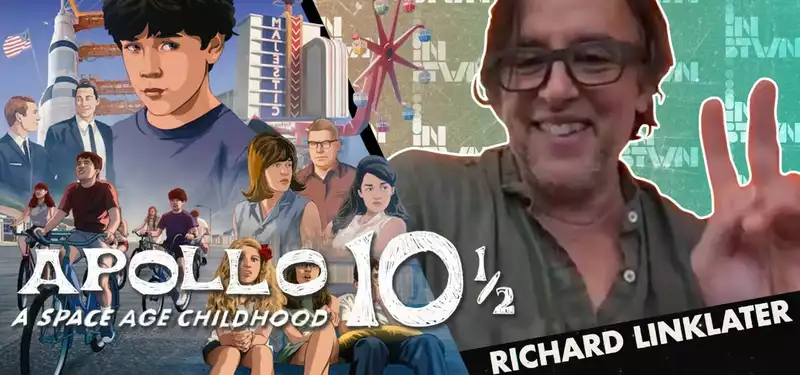Jun 9, 2022
Richard Linklater on his return to animation in "Apollo 10 1/2: Childhood in the Space Age" (video interview)
"It's fun to see what you think you know in a fresh way." - Richard Linklater
Veteran filmmaker Richard Linklater is a master at thinking outside the box. His extensive filmography shows that he approaches things from a deep-thinking starting point, even though he claims to be a fairly simple person.
In his latest film, Apollo 10 1/2: Children of the Space Age, he returns to rotoscoped animation and tries to answer a very simple question: "What was it like growing up as a kid around NASA around the time of the moon landings ......?"
Linklater joined Cartoon Brew's official online event partner, INBTWN Animation, to discuss his latest film and the complexities of memory. The veteran filmmaker also discusses why he returned to Rotoscope, how he creates visual narratives, and how the idea for this story came to him while filming "Boyhood" (2014). Read the full interview here:
Linklater says that "there are a million stories in the world," but what really matters in telling a story is "how you express it." Form is an integral part of visual storytelling, he explains, "I always look for the right form and spend years thinking about it."
For Apollo 10 1/2, he decided to return to animation, specifically rotoscope animation. Rotoscopic animation is a technique he used to great effect in "Waking Life" (2001) and "A Scanner Darkly" (2006), and he believes it will serve him well in his photorealistic filmmaking. "This is my default mode," he says. ...... I want people to think that this performance is real, that I'm just pointing the camera and this is what's really happening," he explains.
The idea of capturing reality is central to "Apollo 10 1/2," even though it deals primarily with the fantasy of a child sent to test the Apollo program before the actual launch. Director Linklater admits that it is "a kind of wish fulfillment," due to the fantasy shared by many children of wanting to be the only hero needed to avert disaster. Says he, "It's a basic kid's story, but it was my fantasy."
During the making of Boyhood, the filmmaker recalled growing up near NASA at the height of its popularity. 'It was an interesting time to be a kid.' That memory planted the seed of an idea that Linklater pondered for years. More than recounting his own childhood, he wanted to explore "how to mix fantasy and reality and bring them to the same level."
Linklater struck that balance through lengthy flashbacks as Jack Black told the audience what it was like to grow up in the 1960s. The film then inserts familiar documentary footage of world events from that era, which was also painstakingly rotoscoped by the film team. [We were able to create a 1960s scrapbook atmosphere. We were able to mix film stocks, genres, graphic styles, and color palettes to create a documentary-like texture. I haven't seen many animated period pieces that incorporate documentary footage like a narrative film," he explains.
Linklater added, "If it had been live action, I think it would have had a lot of those [aesthetic] elements. To achieve this, the director used documentary footage in the same way that he cuts up live-action films. This strategy opened up a world of possibilities and gave "Apollo 10 1/2" a fresh feel.
Director Linklater says he has a very good memory, but understands that he is not data on a hard drive, that "memory is like a piece of theater" and that it is easy to confuse memories and lose the specificity of the moment. He can rely on his memory to find the emotion and trajectory of a story arc, but to make the story specific to the period, the film crew needed access to a vast amount of reference material. So they gathered hours of home video and hundreds of photographs to create a collective memory of that time.
By rotoscoping that historical footage, the filmmakers are "playing tricks on the brain ...... processing something that looks very human and very real."
.



Post your comment